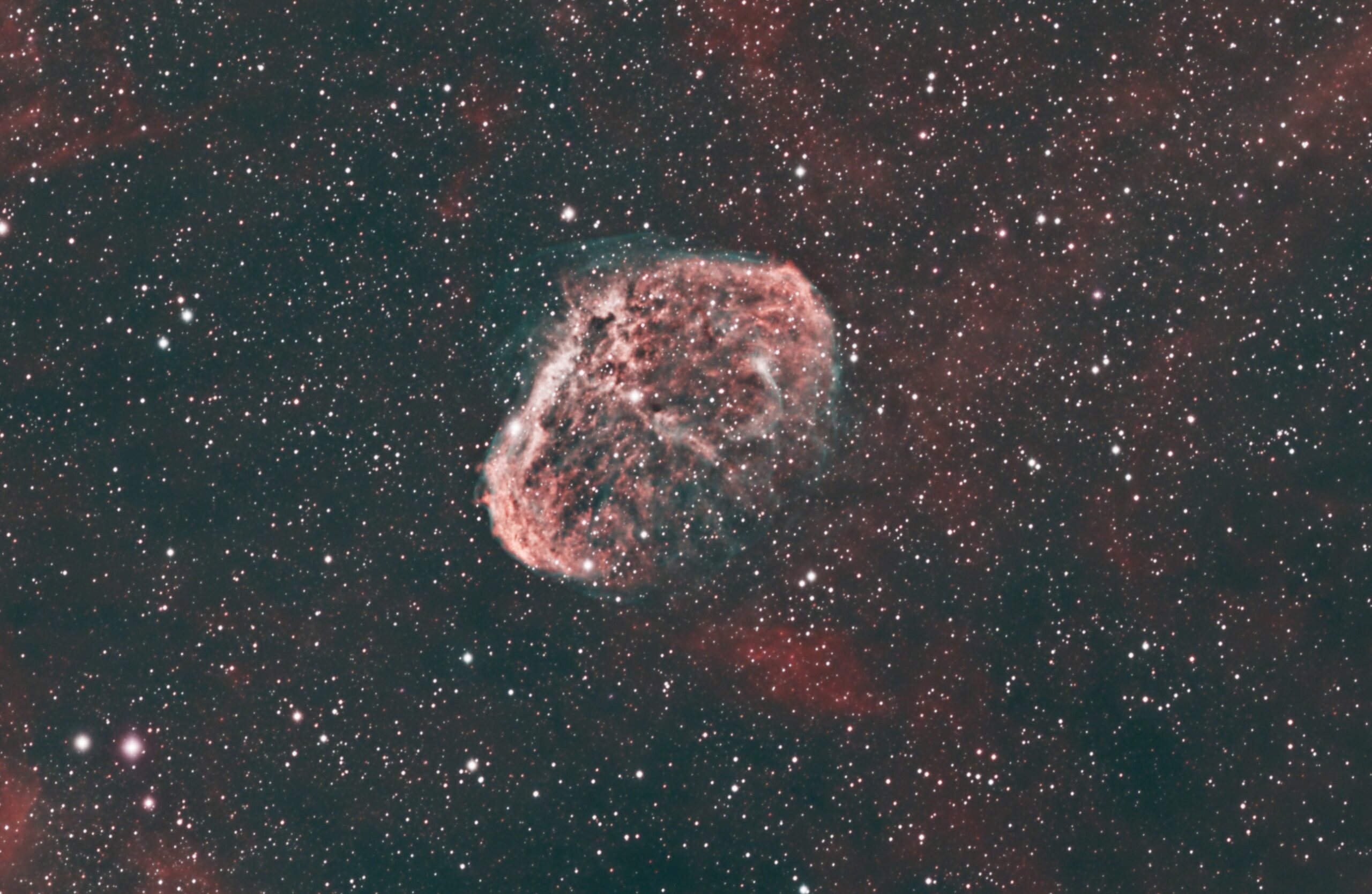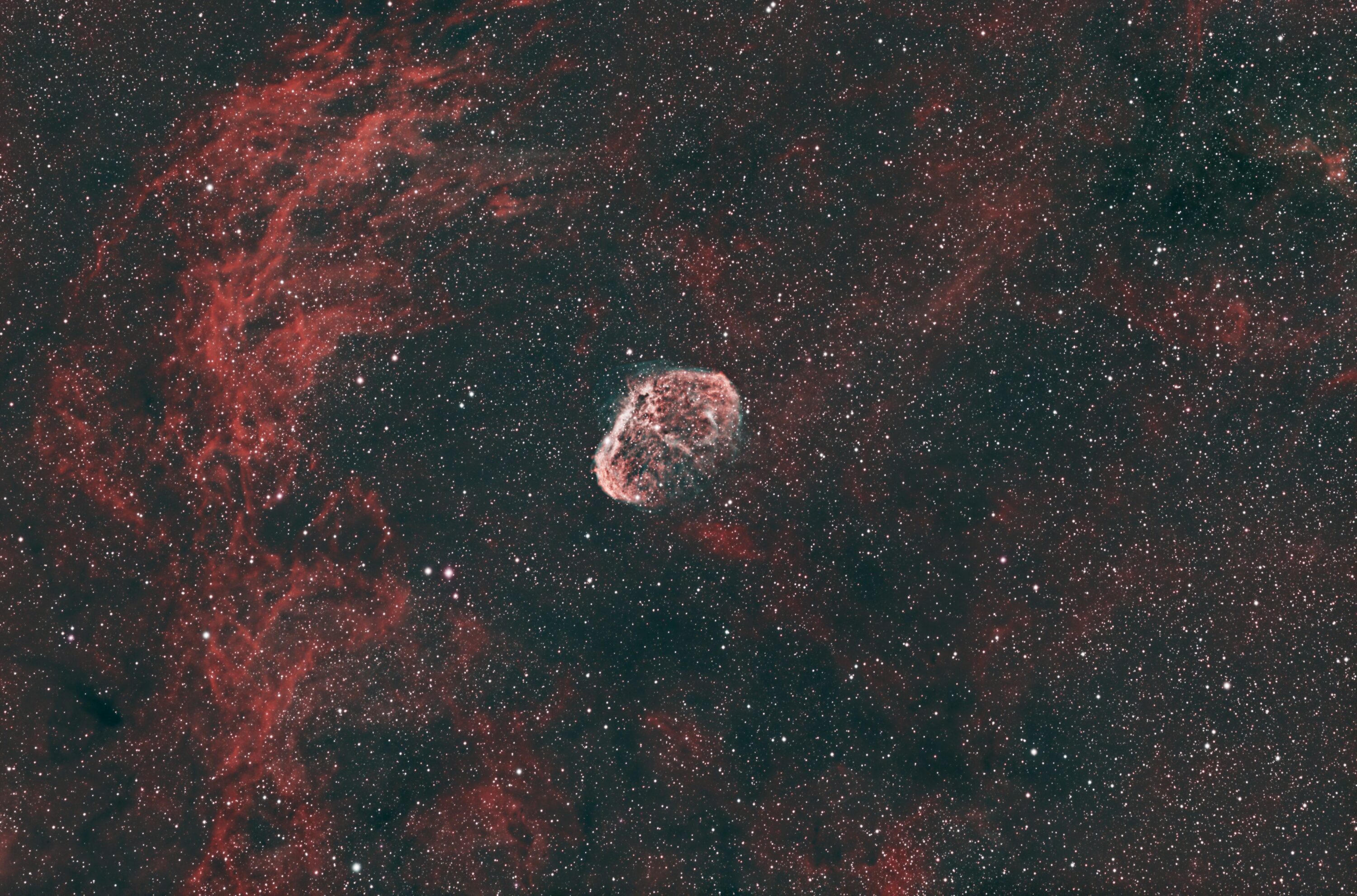No products in the cart.

The Crescent nebula NGC 6888 is a faint, diffuse nebula in the constellation of Cygnus. A beautiful star field of the summer night sky.
This shell of gas (resembling a brain to me) has a Wolf-Rayet star, WR 136, at the center of the nebula which is energizing it with the strong stellar winds. A Wolf-Rayet star is a massive and very hot star that is expelling their outer layers.
The Crescent Nebula NGC 6888 lies 5000 light-years from Earth. The nebula itself is 25 light-years across.
This image was taken using a QHY268C cold cmos camera and Optolong L-eXtreme dual narrowband filter for OSC cameras.

The new QHY268C is a very high resolution and capable camera. It’s 26mp and has small pixels of just 3.76um. This combined with its high sensitivity and low read noise makes for a super camera to image with.
The Optolong L-eXtreme is their latest and greatest astro filter. It’s designed specifically for one shot colour (OSC) cameras to capture both Ha and OIII emission channels at the same time.

The Ha functions at 7nm and the OIII at 7nm as well. This differs from its predacesor the L-eNhance filter, which is Ha 10nm and OIII 24nm. This means the L-eXtreme will deliver superior results for capturing Ha and OIII light. Increased detail and contrast with stronger signal.

The telescope used for this image was my Skywatcher Esprit 100 triplet refractor. It operates at a focal length of 550mm and has proven to be an excellent, high quality telescope for astrophotography. With it’s crisp and contrasty capabilities, it has become my primary imaging telescope. I’ve owned and used it now for over three years and have given it a good amount of use. I find the Esprit 100 is a good balance between price, performance and light gathering power. It’s performed well for me and I highly recommend one if you’re looking for a high quality refractor that is comparable to Takahashi and Vixen astrographs but at a lower cost.

A friend of mine, Ron Brecher aka Astrodoc, pointed out that I had also captured the very faint soap bubble nebula within this image of the Crescent Nebula. It’s a very faint bubble of gas thrown off by a dying star thought to be similar to our own Sun. The soap bubble nebula appears almost delicate in structure and is challenge to capture requiring many hours of data to reveal it. My image is over 11 hours of data and only faintly begins to reveal it. I’ve cropped the larger image to better show the soap bubble nebula.
Technical:
11 hours 20 minutes total
Skywatcher Esprit 100 F5.5 Triplet Refractor http://bit.ly/36w1F7Y
QHY268C cooled cmos camera, 26mp https://bit.ly/37OeYS5
Optolong L-eXtreme filter https://bit.ly/2CkuABq
EQ6 Skywatcher mount https://bit.ly/2C9lap1
Acquisition: N.I.N.A and PHD2
Processing: Pixinsight

My story began more than 40 years ago looking up at the Moon with a small telescope my Father had. Encouraged by my parents, who bought me my very own telescope, a 4.5″ reflector, I began to explore the night sky from my family home backyard. Today I do astrophotography from my home in Kitchener, Ontario and also with remote telescopes located in New Mexico and Australia. Some of my images have won awards and have been featured online and in magazines.


Leave a comment...